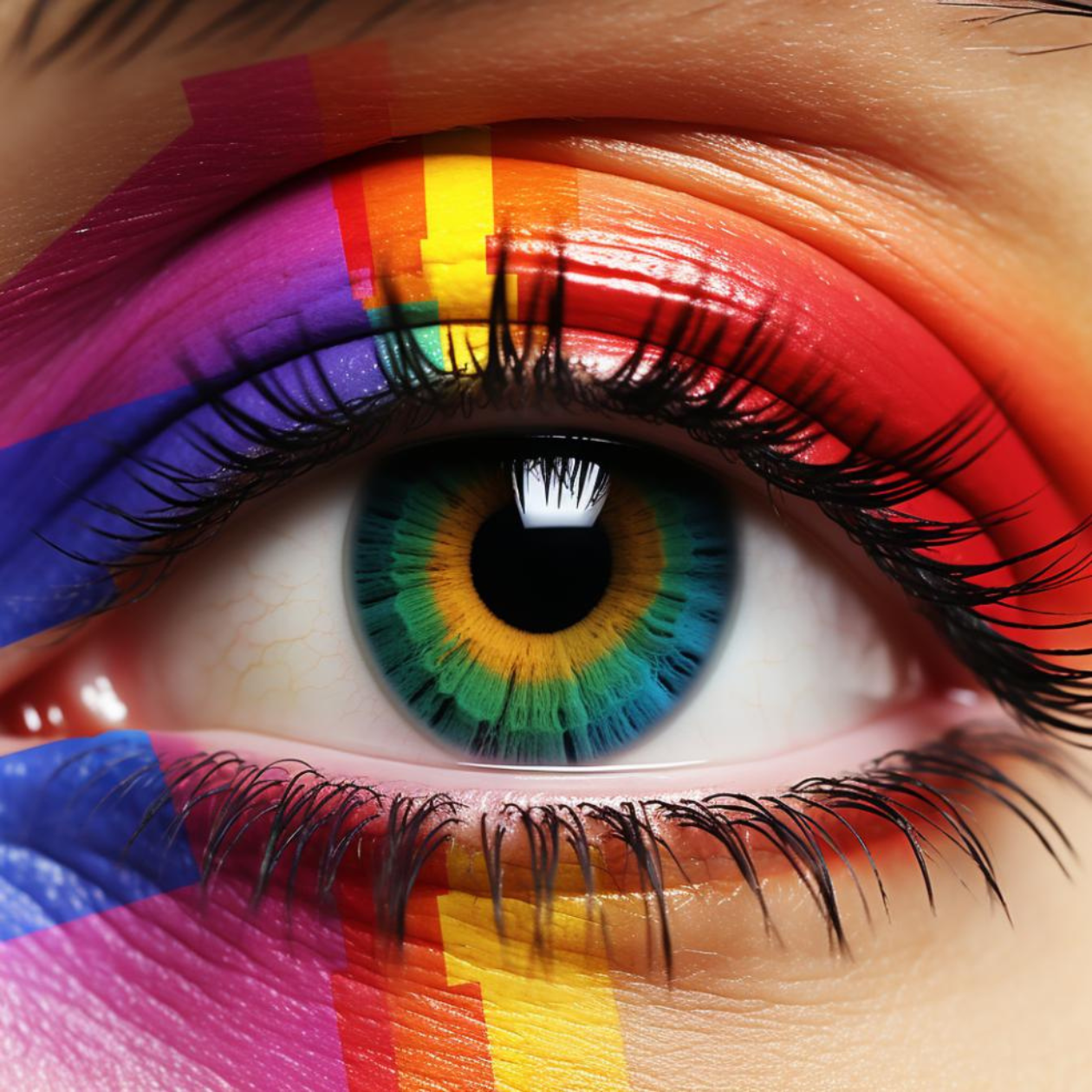Our eyes, the wondrous windows to the world, have an extraordinary ability to perceive and interpret the spectrum of colors that surrounds us. In this blog post, we embark on a fascinating journey into the science of color perception, unraveling the intricate processes that occur within our eyes to create the vivid and diverse palette that shapes our visual experience.
The Science of Color Vision:
Dive into the physiology of our eyes and explore how the human eye captures and processes light. Discover the role of specialized cells called cones, which are responsible for detecting different wavelengths of light and translating them into the rich tapestry of colors we see.
The Role of Light and Color Wavelengths:
Uncover the relationship between light and color, understanding how different wavelengths of light correspond to the myriad hues that make up the visible spectrum. Learn how our eyes perceive colors based on the interactions between light, cones, and the intricate neural pathways that transmit signals to the brain.
The Triumvirate of RGB: Red, Green, and Blue:
Delve into the concept of the RGB color model, a fundamental principle in color representation. Explore how the combination of red, green, and blue light in varying intensities creates a vast array of colors. Understand how this model is employed in digital displays and screens to produce the full spectrum of hues.
Color Adaptation and Sensitivity:
Our eyes are remarkable in their ability to adapt to different lighting conditions. Explore how color adaptation allows us to perceive consistent colors despite changes in illumination. Understand the concept of color sensitivity and how our eyes adjust to varying levels of brightness and darkness.
The Illusion of Color:
Unravel the mysteries of color illusions, where our eyes can be deceived by optical tricks. Explore phenomena like color constancy, afterimages, and simultaneous contrast, gaining insights into the intricate ways our brains interpret and sometimes misinterpret the colors we perceive.
Cultural and Individual Variations:
Recognize that color perception is not only a biological process but also influenced by cultural and individual factors. Explore how different cultures may perceive and interpret colors differently and how individual variations, such as color blindness, can impact the way we experience the world.
Our eyes are incredible marvels of nature, transforming the world into a vibrant canvas of colors. Understanding the science behind color perception enriches our appreciation for the visual symphony that unfolds before us every day. From the intricate dance of light to the neural choreography within our eyes, the perception of colors is a fascinating journey that reminds us of the extraordinary complexity and beauty of the human experience.


